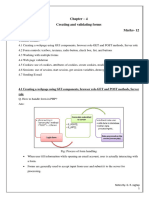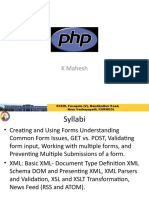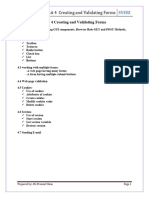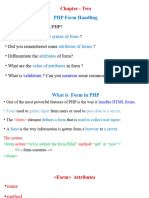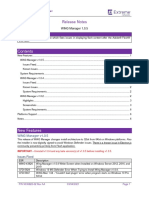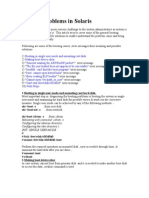0% found this document useful (0 votes)
42 views12 pagesUnit-IV PHP Notes
The document provides an overview of creating and validating forms in PHP, emphasizing the importance of forms in web development for user input and server communication. It explains the use of GET and POST methods for data submission, along with various form controls like text boxes, radio buttons, and checkboxes. Additionally, it covers validation techniques, the use of cookies, and how to handle multiple forms and submit buttons in a single web page.
Uploaded by
mayuri.galande09Copyright
© © All Rights Reserved
We take content rights seriously. If you suspect this is your content, claim it here.
Available Formats
Download as TXT, PDF, TXT or read online on Scribd
0% found this document useful (0 votes)
42 views12 pagesUnit-IV PHP Notes
The document provides an overview of creating and validating forms in PHP, emphasizing the importance of forms in web development for user input and server communication. It explains the use of GET and POST methods for data submission, along with various form controls like text boxes, radio buttons, and checkboxes. Additionally, it covers validation techniques, the use of cookies, and how to handle multiple forms and submit buttons in a single web page.
Uploaded by
mayuri.galande09Copyright
© © All Rights Reserved
We take content rights seriously. If you suspect this is your content, claim it here.
Available Formats
Download as TXT, PDF, TXT or read online on Scribd
/ 12




